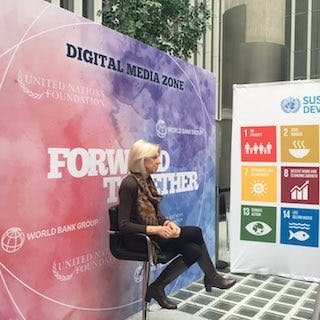Women represent $28 trillion in consumer spending and make up to 80% of consumer decisions worldwide; however, they continue to be under-served in the global financial system. While the number of people with bank accounts has increased dramatically, there is still a 7% gap globally between women and men in access to financial services.
At the World Bank Spring Meetings, Mayra Buvinic, a Senior Fellow at Data2X, an alliance housed at the UN Foundation, discussed why gender data is critical to achieve financial inclusion. Without quality sex-disaggregated data, financial service providers, policymakers, and regulators cannot develop an accurate picture of the women’s market. Consequently, they struggle to effectively provide women with the services and policies they need as individuals and entrepreneurs.
This persistent inequality is a loss not only for women and financial service providers but for sustainable development. Closing the gender gap in financial inclusion could help reduce poverty and foster economic growth worldwide.
A recent report by BNY Mellon and the UN Foundation, Powering Potential, found that achieving equality in women’s access to financial products and services could unlock $330 billion in global annual revenue. Moreover, when women control financial assets, they are often more likely than men to invest in health, education, and well-being of their families, which benefits society as a whole and future generations.
Gender data is essential to realizing these gains for equality and the global economy. Data2X has partnered with Alliance for Financial Inclusion (AFI), the Global Banking Alliance for Women (GBA), the Inter-American Development Bank (IDB), IDB Invest, the International Finance Corporation (IFC), the International Monetary Fund (IMF), and the World Bank Group (WBG)to develop a Global Gender Data Strategy to increase widespread collection, reporting, and use of sex-disaggregated data by policymakers, regulators, and financial service providers to further women’s financial inclusion.
Learn more about the role of gender data: Empowering Rural Women and Girls Through Data

